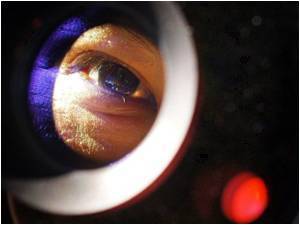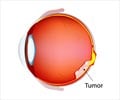
The findings are published online in the May 29 issue of the journal Cancer Cell.
"The beauty of our study is its simplicity," said Kun-Liang Guan, PhD, professor of pharmacology at UC San Diego Moores Cancer Center and co-author of the study. "The genetics of this cancer are very simple and our results have clear implications for therapeutic treatments for the disease."
The researchers looked specifically at uveal melanoma. Uveal collectively refers to parts of the eye, notably the iris, that contain pigment cells. As with melanoma skin cancer, uveal melanoma is a malignancy of these melanin-producing cells.
Approximately 2,000 people in the United States are diagnosed with uveal melanoma each year. If the cancer is restricted to just the eye, the standard treatment is radiation and surgical removal of the eye. But uveal melanoma often spreads to the liver, and determining the metastatic status of the disease can be difficult. In cases of uveal melanoma metastasis, patients typically succumb within two to eight months after diagnosis.
Scientists have long suspected a genetic association with uveal melanoma because one of two gene mutations is present in approximately 70 percent of all tumors. Until this study, however, they had not identified a mechanism that could explain why and how these mutations actually caused tumors.
Advertisement
The two genes implicated – GNAQ and GNA11 – code for proteins (known as G proteins) that normally function as molecular on-off switches, regulating the passage of information from the outside to the inside of a cell.
Advertisement
Earlier research by other scientists has shown that the drug verteporfin, used to treat abnormal blood vessel formation in the eye, acts on the YAP pathway inhibiting the protein's YAP function.
In experiments with mice, the UC San Diego-led team showed that verteporfin also suppresses the growth of uveal melanoma tumors derived from human tumors.
"We have a cancer that is caused by a very simple genetic mechanism," Guan said. "And we have a drug that works on this mechanism. The clinical applications are very direct."
Source-Eurekalert















